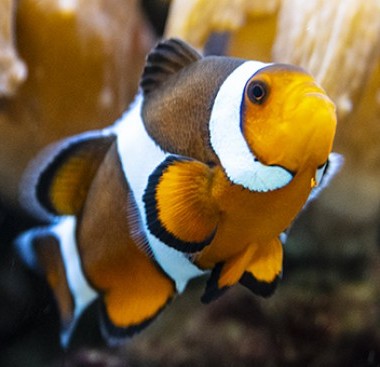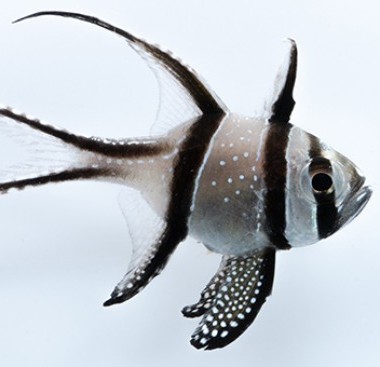The Tuna-Dolphin Connection
Why fishermen cast nets on dolphin to catch yellowfin tuna
By: Staff Date: 03/19/1997 Category: | Animal Legislation | Wildlife Journal |
Introduction
The simple facts are: Dolphins are marine mammals; they swim near the surface of the water and break through the surface to breathe. Marine mammals exist in all the world's oceans.
Tuna are fish, they swim in the water and "breathe" through their gills without direct access to the air.
In the Eastern Tropical Pacific yellowfin tuna fishery, schools of mature tuna swim underneath herds of dolphins of all sorts.
Fishermen find the dolphins, encircle both mammals and fish in special nets, free the dolphins, and haul the fish into the boats. Fishermen using other equipment also adversely impact dolphins.
Sometimes, dolphins get caught in the nets and drown.
Sometimes a tricky current or wind gust twists or vibrates the net, and dolphins get caught and drown.
Sometimes the fishermen are not skilled enough to release the dolphins.
These facts have fueled more than 20 years of accusations against fishermen as greedy exploiters of dolphins, hardened to the deaths of the intelligent sea mammals in the quest for profit. As with many ecological issues, however, the truth is well-hidden underneath the propaganda. The truth is that the fishermen using purse seine nets have successfully worked for decades to reduce dolphin deaths, but the emotional insistence on saving dolphins at any and all costs have decimated the tuna industry, damaged yellowfin tuna stocks, and led to bycatch of many other species, including some whose numbers may be threatened.
Yellowfin tuna and dolphins
Young yellowfin tuna swim in schools and may congregate under logs or other floating debris, usually within 200 miles of shore. They begin spawning at about 18 months of age (15 pounds) and reach sexual maturity about 12-18 months later (49-85 pounds). As they age, they change their habits; mature yellowfin head out to sea and can often be found swimming underneath herds of dolphins.
If fishermen are not allowed to cast their nets around dolphins to get the tuna swimming below, they must seek younger, smaller fish in order to satisfy the market and support their families. These younger fish swim in, around, and among dozens of other animals from sharks to sea turtles, animals that are gathered up in the nets with the tuna, animals that also die. Many of the tuna caught this way are too small to be commercially usable, and they are thrown overboard with the other incidental animals.
Such fishing targets tuna before they have finished their reproductive life and thus may hamper the yellowfin's ability to replenish its population. It also results in more incidental deaths.
As estimated by the scientists of the IATTC, 10,000 sets of purse seine nets around immature yellowfin tuna found swimming in schools, will cause the deaths of eight dolphins; 2.4 million small tuna; 2100 mahi mahi; 12,220 sharks; 530 wahoo; 270 rainbow runners; 1010 other small fish; 1440 billfish; and 580 sea turtles.
Ten thousand sets of purse seine nets around immature tuna swimming under logs and other debris will cause the deaths of 25 dolphins; 130 million small tunas; 513,870 mahi mahi; 139,580 sharks; 118,660 wahoo; 30,050 rainbow runners; 12,680 other small fish; 6540 billfish; 2980 yellowtail; 200 other large fish; 1020 sea turtles; and 50 triggerfish.
Ten thousand sets of purse seine nets around mature yellowfin swimming in association with dolphins, will cause the deaths of 4000 dolphins (0.04 percent of a population that replenishes itself at the rate of two to six percent per year); 70,000 small tunas; 100 mahi mahi; 3 other small fish; 520 billfish; 30 other large fish; and 100 sea turtles. No sharks, no wahoo, no rainbow runners, no yellowtail, and no triggerfish and dramatic reductions in all other species but dolphins. With a reproductive rate ranging from two percent to six percent, the dolphin population can sustain an annual loss far higher than the 5000 or 10,000 or 50,000 or even 100,000 (about one percent of the total ETP dolphin population of about 10 million) and remain viable, according to IATTC's James Joseph in his 1994 report.
Dolphins are in good shape
According to a report by P.R. Wade and T. Gerodette presented to a committee of the International Whaling Commission in 1992 and another report from Gerodette to the committee in 1993, total dolphin stocks in the ETP yellowfin tuna fishery number nearly 10 million animals, with the following breakdown of species most commonly affected by purse seine netting of yellowfin tuna (the numbers in brackets are the mortality numbers and rate for 1992):
Northeastern spotted, 738,100 (4657 animals or 0.63 percent); western/southern spotted, 1.3 million (1874 animals or 0.14 percent); eastern spinner, 632,700 (2794 or 0.44 percent); whitebelly spinner, 1.02 million (2044 or 0.20 percent); northern common, 477,000 (1773 or 0.37 percent); central common, 415,600 (1815 or 0.44 percent); southern common, 2.2 million (64 or 0.003 percent); all others, 2.73 million (518 or 0.02 percent).
Dolphins reproduce at a rate of two to six percent. None of these species were impacted close to their ability to replenish their stocks.
About The Author
All Authors Of This Article: | Norma Bennett Woolf |












